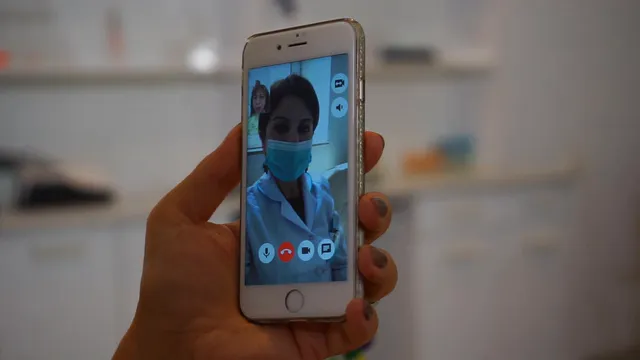Introduction
In the healthcare universe, clinical trials are like the superheroes of medical research. They work tirelessly behind the scenes, testing new treatments and therapies. These trials ensure that what we find on pharmacy shelves is not just a pretty package but safe and effective. But have you ever stopped to think about the mountain of data these trials generate? Enter the “trials report”—a goldmine of insights that sheds light on the complex world of clinical research.
A trials report is more than just a document; it’s a detailed narrative of the journey a new treatment takes from concept to reality. The importance of these reports cannot be overstated. They provide transparency, helping stakeholders understand the outcomes of trials. Patients, healthcare professionals, and regulators rely on these insights to make informed decisions.
Imagine trying to assemble a puzzle without the picture on the box. That’s what navigating the world of new treatments would be like without effective trials reports. These documents reveal the trials’ objectives, design, results, and conclusions. They help us grasp the significance of the findings and the implications for real-world health.

Speaking of navigating this complex world, if you’re looking for a comprehensive guide, check out Clinical Trials: A Practical Guide to Design, Analysis, and Reporting. It’s like having a trusty GPS on your research journey!
This article aims to guide you through the anatomy of trials reports. We’ll explore their components, significance, and practical tips on how to read and interpret them. So, fasten your seatbelt and prepare for an enlightening exploration of clinical trials and the invaluable insights they provide.
Summary of Key Points
Understanding trials reports is vital for anyone interested in medicine or healthcare. Here’s a sneak peek into what we’ll cover in this extensive article:
- Definition and Purpose: What is a trials report, and why is it essential in clinical research?
- Types of Trials: An overview of different clinical trials and their aims.
- Components of a Trials Report: A breakdown of the critical elements that make up a comprehensive report.
- Navigating Trials Reports: Tips on how to read and interpret these reports effectively.
- The Importance of Transparency: Why transparency in trials reporting is crucial for public trust and safety.
- Case Studies: Real-world examples illustrating the impact of trials reports on healthcare decisions.
- Future Trends: Insights into how the landscape of trials reporting is changing and its implications for clinical research.
Curious to learn more? Read on to uncover the intricate details behind trials reports and their vital role in the healthcare system. By the end, you’ll be well-equipped to understand the stakes involved when new therapies are introduced. Let’s dive into the fascinating world of clinical trials reports!

Components of a Trials Report
Essential Elements
Trial Title: The title is your first impression. It should be clear, concise, and descriptive. A good title hints at the study’s focus, avoiding vague terms. It’s like the movie trailer for your research—give them something worth watching!
Objectives: The objectives outline the trial’s goals. They answer the “why” behind the study. Understanding these aims helps readers gauge the relevance of the findings. It’s your way of saying, “Here’s what we set out to accomplish!”
Design: This section covers the methodologies used in the study. Was it randomized? Double-blind? Knowing the design helps readers understand the robustness of the results. It’s crucial to know whether the study was as rigorous as a marathon runner or just a casual jogger.
Endpoints: Endpoints are the outcomes the trial aims to measure. They fall into two categories: primary and secondary. Primary endpoints are the main events researchers are interested in, while secondary endpoints offer additional insights. Think of them as the main course and the side dishes—you need both for a satisfying meal!

For a deeper understanding of the methodologies involved, consider picking up The Clinical Trials Handbook. It’s like having a backstage pass to the world of clinical research!
Demographics and Data Handling
Inclusion and exclusion criteria are critical for participant selection. They define who can join the trial and who should stay out. This ensures that the results are applicable to the right population. It’s like making sure only the right ingredients go into a recipe—no one wants a mystery flavor!
Demographic data provides context. It includes age, gender, and health status of participants. This data is essential for understanding how different groups might respond to treatment. After all, what works for a 25-year-old athlete might not work for a 70-year-old grandparent!

If you’re interested in learning more about the significance of demographics in clinical research, check out The Immortal Life of Henrietta Lacks. This book dives deep into the intersections of ethics, race, and medical research.
Results and Conclusions
Results are presented in various formats—charts, graphs, and tables. These visuals make the data digestible. They summarize findings at a glance, turning complex statistics into something that even your pet goldfish might understand (well, sort of).
Interpreting statistical significance is crucial. A result can be statistically significant but not clinically relevant. This means that even if the numbers look flashy, they might not translate into meaningful benefits for patients. It’s like finding a shiny new toy that turns out to be a one-hit wonder—great in theory but lacking in function.

To enhance your statistical literacy, consider reading The Art of Statistics: Learning from Data. It’s a brilliant resource to help you decode the numbers!
Navigating Trials Reports Effectively
Reading a Trials Report
Approaching a trials report can feel like trying to read a map with no landmarks. Start by scanning the abstract for a summary. This will give you a bird’s eye view of the study. Then, dig into the introduction to find out why the study was done.
Next, focus on the methods section. This is where the magic happens! Understanding the design will help you judge the trial’s credibility. After that, the results section should be your best friend. Look for key findings and take note of any visuals.

Finally, wind up in the conclusion. Here, researchers will highlight the implications of their findings. It’s the cherry on top of your research sundae!
Common Terminologies
Every field has its jargon, and clinical trials are no exception. Here’s a quick glossary to simplify some frequently used terms:
- Randomization: Assigning participants randomly to eliminate bias.
- Placebo: An inactive substance used as a control.
- Blinding: Keeping participants unaware of treatment assignments to reduce bias.
- Efficacy: The ability to produce a desired result under ideal conditions.
Understanding these terms makes navigating trials reports much easier. It’s like learning a new language, but way less daunting.
By mastering these components, you’ll not only understand trials reports better but also appreciate the meticulous work behind them. So, let’s turn these insights into informed decisions, and who knows? You might just become a trials report aficionado!

Regulatory Framework
Understanding the landscape of trials reporting is crucial. Multiple guidelines and regulations govern how these reports are created and disseminated. Organizations like the International Council for Harmonisation (ICH) and the Food and Drug Administration (FDA) play pivotal roles in this arena. Their guidelines set the standards for clinical trial protocols and the reporting of results.
In Europe, the European Medicines Agency (EMA) is also a key player. They ensure that trials meet stringent safety and efficacy benchmarks before any new treatment can reach the market. These institutions enforce compliance, ensuring that researchers follow established ethical and scientific standards.
Transparency is a priority. Regulations mandate that study results be publicly accessible, allowing stakeholders to verify claims. This fosters trust and accountability in the clinical research process. With these guidelines in place, trials reporting remains a structured and regulated endeavor, ensuring that the information provided is both reliable and relevant.

If you’re keen on understanding the implications of these regulations, grab a copy of Bad Pharma: How Drug Companies Mislead Doctors and Harm Patients. It’s an eye-opener about the pharmaceutical industry!
Case Studies: Impact of Trials Reports
Notable Trials and Their Reports
Case Study 1: The ENHANCE Trial
The ENHANCE trial was a landmark study focusing on the use of ezetimibe in patients with familial hypercholesterolemia. Its findings sparked significant debate in the medical community. The trial reported no significant reduction in cardiovascular events despite lowering cholesterol levels. This led to a reevaluation of treatment protocols, emphasizing that cholesterol levels are not the sole indicator of heart health. The implications? Healthcare professionals began to consider broader factors when prescribing treatments, reshaping how we approach cholesterol management.
Case Study 2: The Vioxx Controversy
The Vioxx trial provides a cautionary tale about the importance of trials reporting. Initially hailed as a miracle drug for arthritis, it was later withdrawn due to serious cardiovascular risks. The trial reports highlighted this risk, but they were not adequately communicated to healthcare providers and the public. This situation emphasized the need for transparency and thorough reporting. The fallout led to stronger regulations on drug reporting and more stringent requirements for safety disclosures in trials.

For a gripping narrative on how trials can influence public health, consider reading The Emperor of All Maladies: A Biography of Cancer. It’s a profound exploration of cancer and its treatment!
Lessons from Historical Trials
Historical trials have paved the way for current practices. Take the famous Tuskegee Syphilis Study, for instance. Its unethical nature not only resulted in a loss of trust in medical research but also led to significant changes in ethical standards for trials. The Belmont Report established foundational principles for conducting research involving human subjects, focusing on respect, beneficence, and justice. These lessons are vital for ensuring that today’s trials prioritize participant safety and ethical integrity.

Future Trends in Trials Reporting
Advancements in Technology
The future of trials reporting is bright, thanks to advancements in technology. Digital platforms are revolutionizing how data is collected, analyzed, and reported. Researchers can now utilize online databases to streamline the reporting process. This efficiency reduces the time between trial completion and public reporting, getting vital information into the hands of stakeholders faster.
Artificial intelligence (AI) is also making waves. With data analytics, researchers can uncover patterns and insights that were previously hidden. AI algorithms can analyze vast datasets from trials, identifying trends that may influence future research directions. This not only enhances the reporting process but also improves the quality of clinical research overall.

If you’re interested in how AI is shaping the future of research, consider reading The Lean Startup: How Today’s Entrepreneurs Use Continuous Innovation to Create Radically Successful Businesses. It’s a great read on innovation in this digital age!
Evolving Standards
As the landscape changes, so do the standards for trials reporting. Regulatory bodies are continuously updating guidelines to reflect the latest scientific knowledge and societal expectations. Ongoing education and training for researchers are paramount to ensure compliance with these evolving standards. This commitment to improvement will foster greater trust and transparency in the clinical trials ecosystem, ultimately benefiting patients and researchers alike.

In conclusion, the future of trials reporting will likely see a more integrated, technology-driven approach that enhances the quality, speed, and transparency of clinical research outcomes. This is a win-win for everyone involved—especially patients!
Evolving Standards
The future of trials reporting is set to shift dramatically. As medicine evolves, so must the standards governing clinical trials. Expect increased emphasis on transparency, accessibility, and patient-centered reporting. With technology advancing, real-time data sharing will become the norm. Researchers will likely leverage digital platforms to disseminate findings quicker than ever. Imagine receiving trial results while still sipping your morning coffee—sounds delightful, right?
Moreover, the integration of artificial intelligence could enhance the accuracy and efficiency of reporting processes. AI tools can analyze vast datasets, offering insights that human researchers might overlook. This could lead to more robust conclusions about treatment efficacy and safety.
Ongoing education and training are essential for researchers. As standards evolve, researchers must stay updated on best practices and regulatory requirements. Workshops and online courses will become vital resources. A well-informed researcher is a confident one, capable of navigating the complexities of trials reporting. Encouraging a culture of continuous learning can only strengthen the field of clinical research.

FAQs
What is the primary purpose of a trials report?
The primary purpose of a trials report is to provide a detailed account of clinical research findings. These reports summarize the objectives, methodologies, and results of clinical trials. They serve as a transparent window into the effectiveness and safety of new treatments. Essentially, trials reports help bridge the gap between researchers and stakeholders, including healthcare professionals and patients. By illuminating the journey of each trial, these documents play a critical role in informing decisions regarding patient care and treatment options.
How can I access trials reports?
Accessing trials reports is easier than ever. Many reports are available through online databases and clinical trial registries. Websites such as ClinicalTrials.gov and the European Union Clinical Trials Register provide comprehensive information on various trials. Additionally, academic journals often publish trials reports. You can also find them on the websites of organizations conducting the research. If a report is not publicly available, you may request it directly from the sponsoring institution or contact authors for access.
Are all trials reports publicly available?
Not all trials reports are publicly accessible. While many organizations aim for transparency, factors like commercial confidentiality and patient privacy can limit access. Reports on trials involving investigational drugs often have restricted information until marketing approval is granted. However, regulatory bodies like the FDA and EMA are pushing for greater transparency in clinical research. This means that more reports are becoming available over time, improving public trust and ensuring that you have access to vital information about ongoing and completed trials.
What should I do if I find discrepancies in a trials report?
If you encounter discrepancies in a trials report, take action! Start by verifying the information through other credible sources. If the inconsistencies are significant, reach out to the authors or the institution that conducted the trial. They may clarify or correct the information. You can also report your concerns to regulatory bodies or organizations overseeing the trial. Transparency is essential in clinical research, and holding researchers accountable helps maintain the integrity of the field.
Why are some trials not published?
Several reasons contribute to the non-publication of trials. Sometimes, trials may yield inconclusive or negative results, leading sponsors to decide against publication. Other times, logistical challenges or funding issues can hinder the reporting process. Additionally, ethical concerns, such as patient safety or confidentiality, might prevent certain trials from being published. This lack of publication can skew the perception of treatment effectiveness and safety, making it crucial for the research community to push for more comprehensive reporting practices.
Please let us know what you think about our content by leaving a comment down below!
Thank you for reading till here 🙂
Understanding the difference between practical significance versus statistical significance is crucial when interpreting trial results.
All images from Pexels




